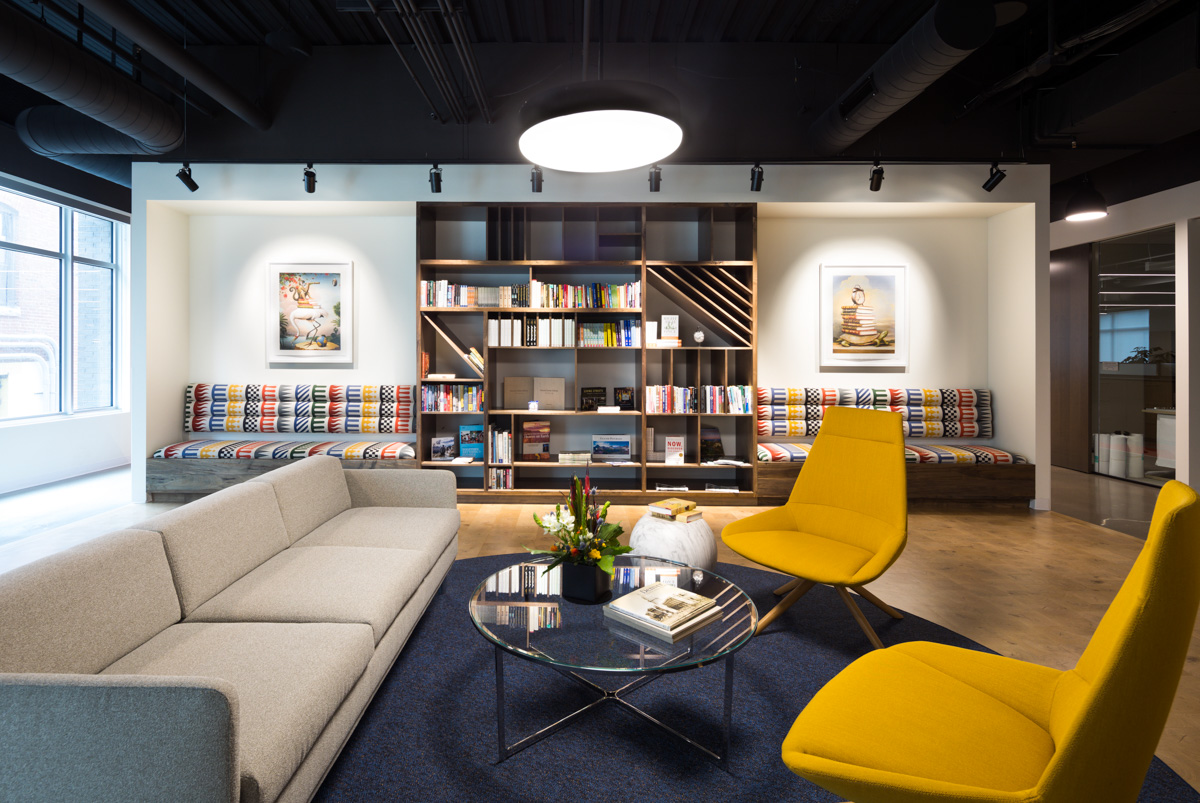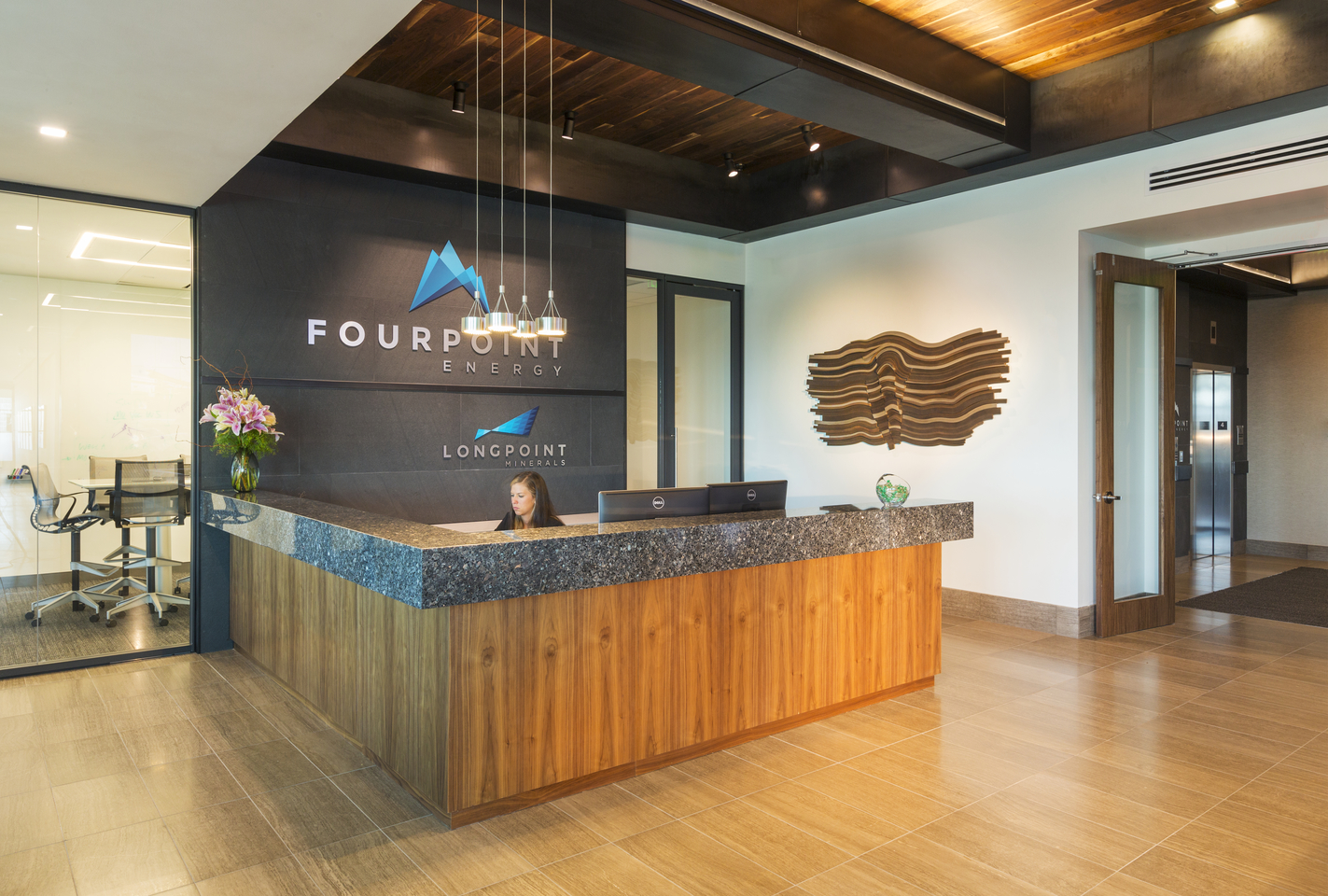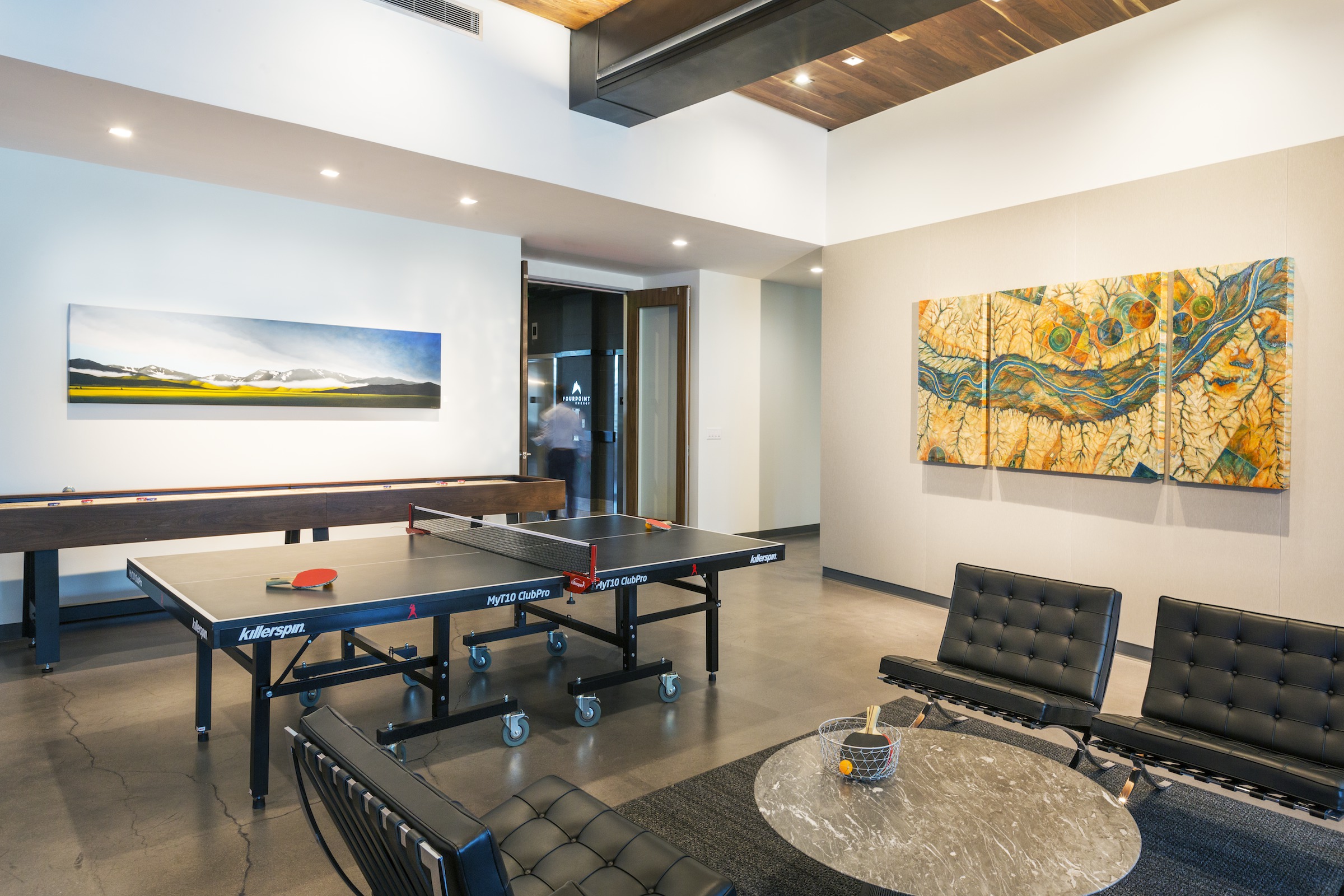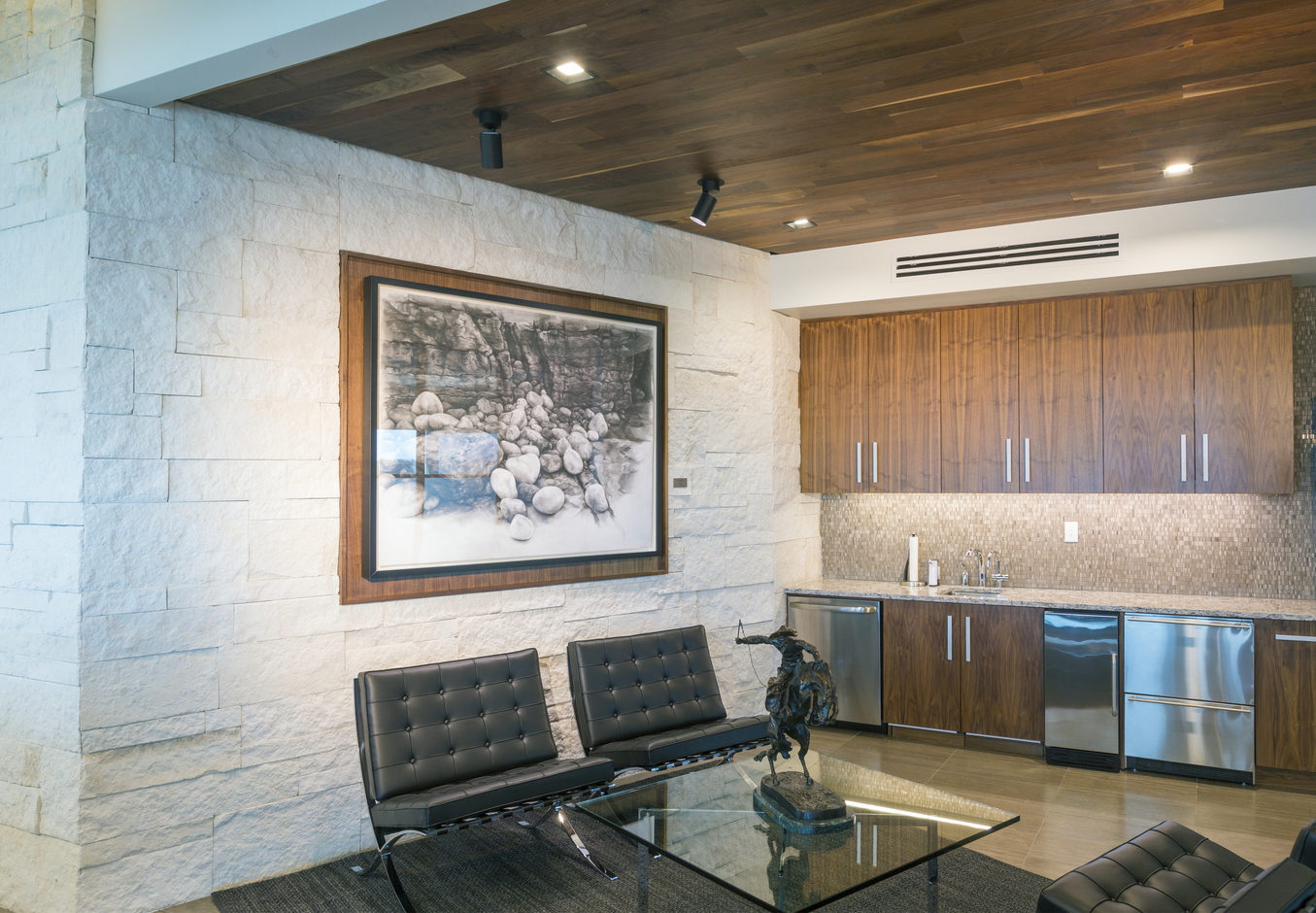Why you should be curating a meaningful workplace art program.

Before you read on, imagine yourself at your workplace or in an office lobby with two pieces of artwork directly in front of you.
The first piece is a semi-transparent leaf, back-lit, matted in white in a brown wooden frame.
The second piece depicts historical art references as varied as Picasso, Matisse, Klimt, Otto Dix, and Max Beckman. Playing with perspective, the work appears to change from different vantage points, paradoxically receding and expanding simultaneously due to its carved surface and forced perspective painting technique.
Which artwork is more impactful? Which holds more power?
In art, it’s certainly true that beauty is in the eye of the beholder. We react to pieces differently based on our preferences, experiences and history. But beyond the perception of beauty and whether we like a piece or not, the right art can produce business results that are hard to ignore.

The first piece of workplace art I described is likely one you’ve seen before in an office or a doctor’s waiting room. Maybe it was selected by a corporate buyer from a catalog, shipped in bulk and quickly installed in the same location in each hotel room. It’s a safe choice. People won’t likely object to its colors or its subject matter, and the price is typically low.
However, just as people don’t object to it, they also don’t connect with it or remember it. Their eyes may briefly take it in before quickly moving on because the reality is, there’s not much to it. It’s expected. And if you’re a designer (or a client of a designer) looking to create a space that invites customers in, attracts and retains top talent, or creates an engaging atmosphere for clients, that’s not a good return on investment.
Curating a meaningful workplace art program – and creating experiences worth the investment – is no simple task. In fact, the most memorable art experiences are an exercise in self-examination, reflection, and partnership. But given the general lack of understanding around the process of corporate art curation, it’s no wonder even designers are often unclear about how to determine the ROI with an art program.

Brand & Vision: The True Value of Art
While there’s no magic formula, a strong workplace art experience should be guided by a clear vision and well-defined goals. That vision and those goals, which are almost always tied to a desire to use art to tell a compelling story about the brand, are what gives art its purpose, meaning, and value.
In the recently released State of the Art Consulting and Curating Business research report produced by NINE dot ARTS, we asked professionals working in industries including real estate development, architectural design, hospitality and others their opinions about workplace art and their business.
Almost two thirds – 62 percent – of respondents said that it’s “absolutely critical” or “very important” that art expresses the brand, mission, and vision.
For as complex as art can sometimes be, recognizing the need to approach workplace art for your space in a brand-focused, strategic manner is a crucial first step. While this might seem like a no-brainer, intentional art experiences take work. They’re born from a road map conceptualized in the context of an organization’s goals and translated into a vision that is unique to the space and the brand.

Beyond visual preferences and artistic mediums, this process takes into account important factors like target audience profiles, prioritized location planning, traffic patterns within the space, budget allocation, and the potential need to feature local/regional artists in order to create a connection between the organization and the local community.
With this strategic approach, curators and designers are better able to commission or select art that’s reflective of who an organization is, what they do, and what they stand for, which results in more impactful spaces that stand out in the minds of talent, clients, and partners.
Somewhat surprisingly, the report also revealed that only 28 percent of respondents say it’s “very important” that art contribute to revenue or profitability. We feel that reflects a missed opportunity. Although it’s difficult to directly correlate artwork to financial success, the effects of a strong art program on customer and employee experience can provide both tangible and intangible benefits. A strong corporate art program can indicate stability, longevity, and a company’s investment in cultivating a strong culture – all signals of a thriving organization.
Take the second piece of artwork that I described early on – the more interesting piece – for example. That piece actually exists in an office space in the Dairy Block, a unique micro-district in Denver’s Lower Downtown neighborhood. The art program curated for this office delivers an immersive, dynamic experience by inviting employees to explore the scale, complexity, craftsmanship and quality of the work of artist Diego Rodriguez-Warner.

Powerful artwork can also support mission-critical recruitment and retention activities.
At FourPoint Energy, a private energy exploration and production company, for example, a 400-pound hand-forged steel and bronze sculpture that depicts the compression of tectonic plates hangs in the main lobby. In the stairwell, a cut-and-painted aluminum sculpture highlights geologic history and processes, while a series of bronze sculptures portray business negotiations in the boardroom. Together, the artwork captures the dynamic relationship between art and science and also represents FourPoint Energy’s entrepreneurial spirit. Company leadership has stated the art experience has helped the firm attract top talent.
Don’t forget about happy and productive employees, either.
According to a University of Exeter study from Alexander Haslam and Dr. Craig Knight, employees in an office with art are 15 percent more productive. The study also revealed that 94 percent of employees surveyed believe that art enhances the work environment, while 78 percent and 64 percent of employees said, respectively, that art reduces stress and promotes creativity.
By bringing out-of-the-box thinking and a strategic approach to art in workplace design, organizations can change perspectives, inspire brand loyalty, increase employee productivity, and create a positive culture.
I encourage you to embrace these insights and re-examine your approach to art in workplace design, as consumers, designers, and even as employees. Insist on strengthening the intersection of art and business to make people happier, business stronger, and our community more vibrant.
Why?
Because good art is good business.


I find it so interesting that you brought up the possible connection between art and profitability. What a great read.
I found it interesting how you said that it is absolutely critical for art t express a company’s brand, mission, or vision. This way they can show to their employees and customers that they are always driven. That even the art has a purpose of motivating and reminding people what the company is all about.